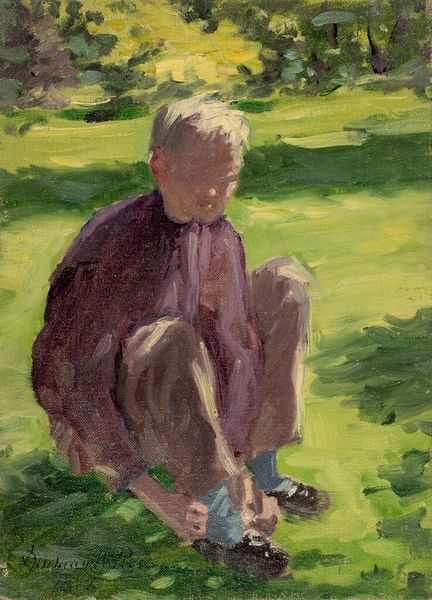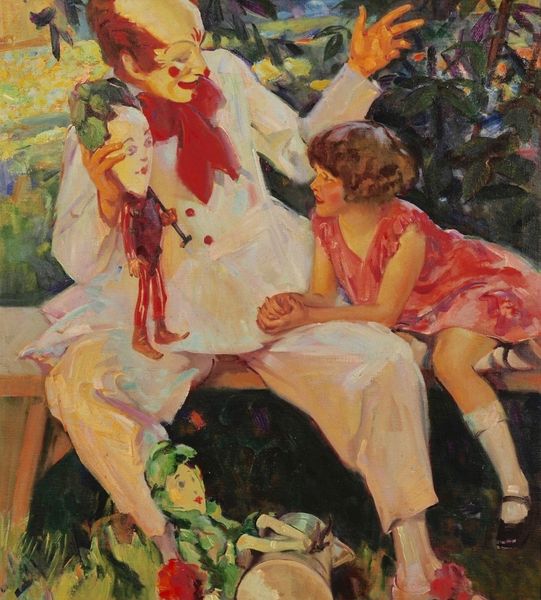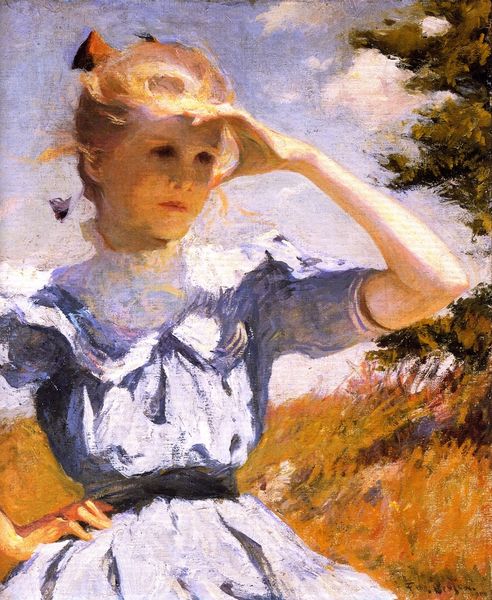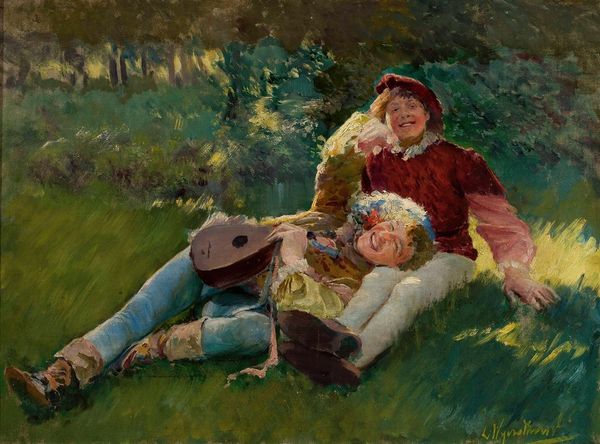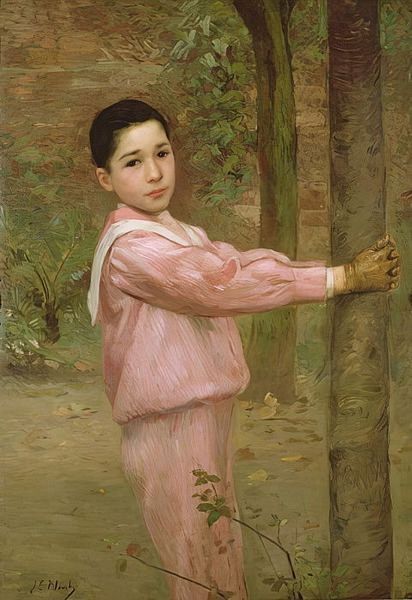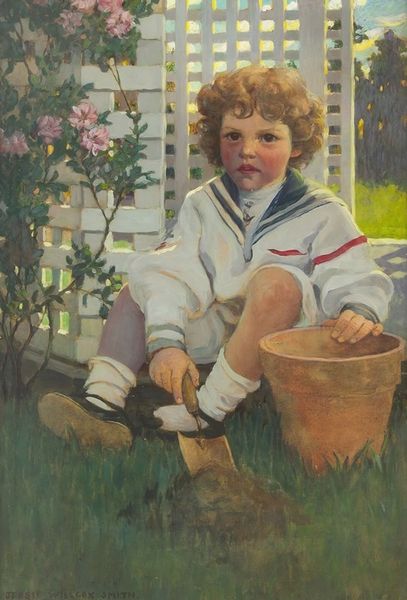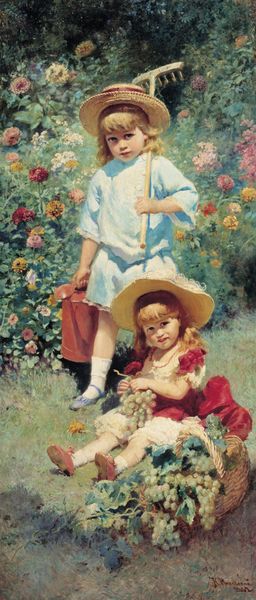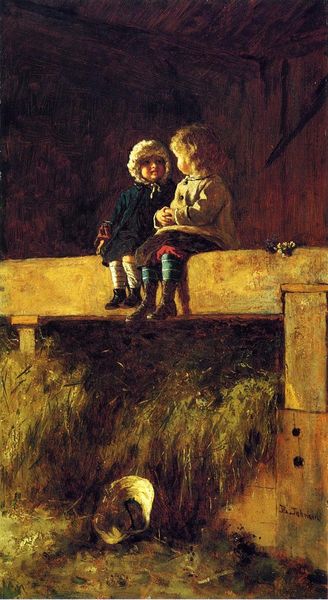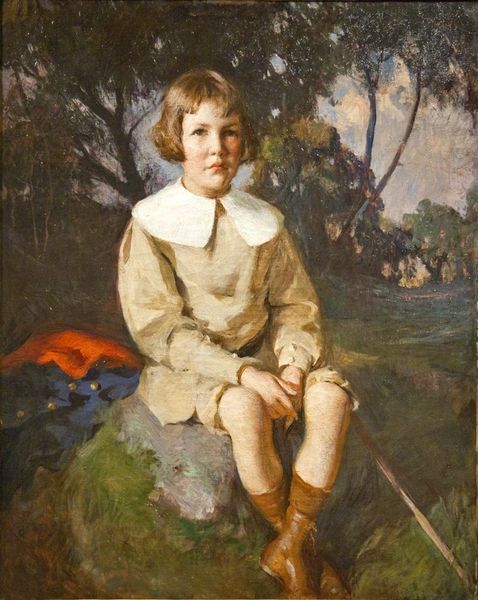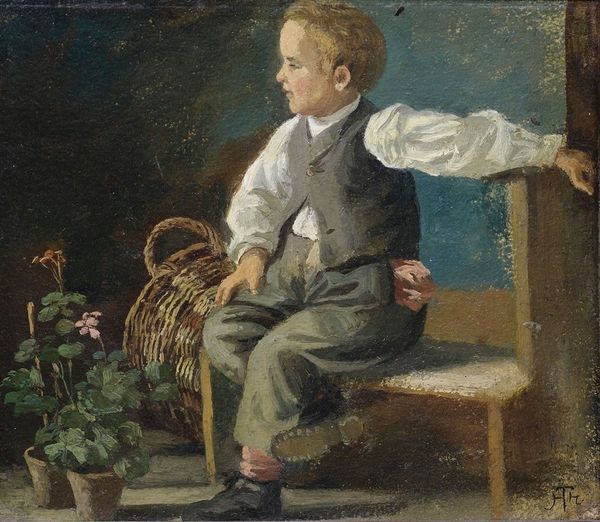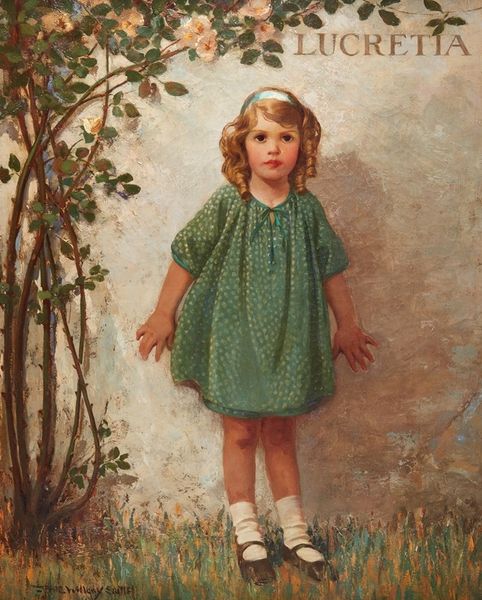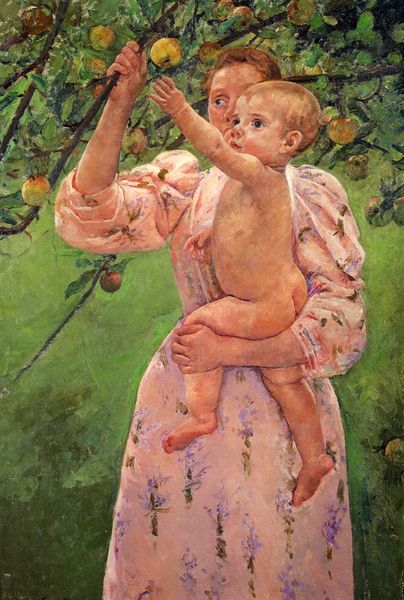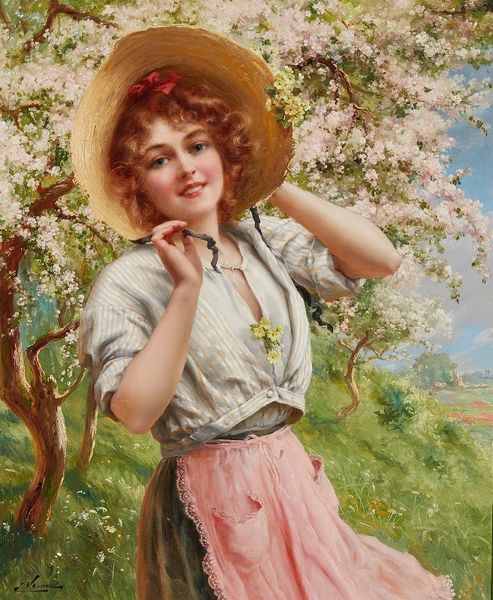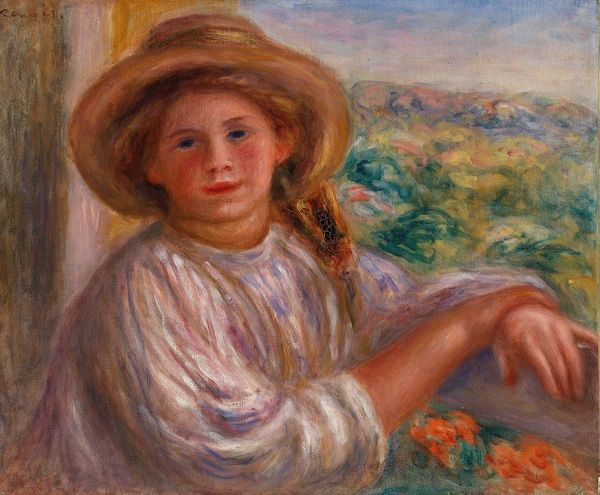
Dimensions: 50.8 x 76.2 cm
Copyright: Haddon Sundblom,Fair Use
Editor: This is "Boy in Striped Sweater Sits on a Tree Branch" painted in 1929 by Haddon Hubbard Sundblom, using oil paint. It has such a cheerful, outdoorsy feel to it. What do you see in this piece, especially considering when it was created? Curator: Beyond the surface joy, I see this painting as a potential commentary on class and leisure during the interwar period. Sundblom, primarily known for his commercial illustrations, here paints a genre scene seemingly celebrating idyllic childhood. Yet, who had the leisure for tree-climbing and who could afford such idyllic scenes to be captured? Is this representation exclusionary in its focus? Editor: That’s interesting, I hadn’t thought of it that way. The boy’s striped sweater seems quite typical, doesn't it? Curator: Indeed. But think about how clothing acts as a signifier. The striped sweater could subtly connote a certain social status, perhaps one of relative comfort, differentiating him from working-class children of the era. Ask yourself whose stories get told and whose are erased in the rosy depictions of the past. Editor: So, it's not just a simple portrait of a happy boy. It prompts a reflection on social dynamics. How does Sundblom's other work tie in with this perspective? Curator: Sundblom’s commercial work often reinforced consumerist culture, presenting an aspirational, often sanitized, vision of American life. So here, we must critically examine whose “normal” he was painting and how that contributed to broader societal narratives of the time. It's not enough to admire the painterly brushstrokes; we must unpack the social implications embedded within the canvas. Editor: That gives me a lot to consider about art’s role in reflecting and shaping society. Thanks! Curator: Absolutely. It's in these critical examinations that art history becomes a powerful tool for understanding our present.
Comments
No comments
Be the first to comment and join the conversation on the ultimate creative platform.
